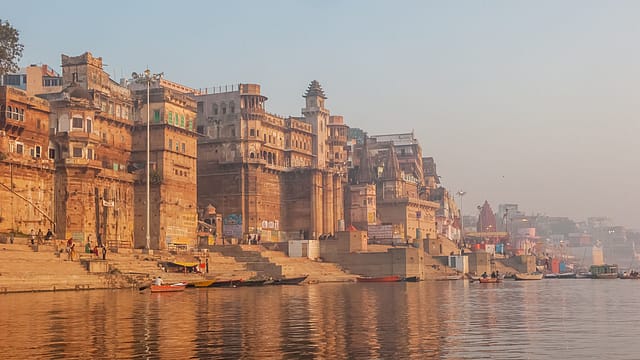The cultural economy of Kashi
ADVERTISEMENT

I have been listening to heavy metal - not just any heavy metal but the heavy metal band Hu from Mongolia, their two addictive, guttural tracks, Wolf Totem and Yuve Yuve Yu.
These songs are being watched by tens of millions of people on YouTube and in Mongolia, they are being treated as the anthem, no, wake up call, for a generation.
The song Yuve Yuve Yu for instance shows band members munching popcorn before video games and football matches, and sleeping, until a phone call transports them to the raw and breathtaking mountains of Mongolia where they sing, "It has been so long eating and drinking and being merry; How strange, how strange; Taking our Great Mongol ancestors names in vain; How strange, how strange; Yet would not honour our oath and destiny; How strange, how strange; Why the valuable ethics of ancestors become worthless; How strange, how strange..."
The song has had 14 million views on YouTube and another track by the same band, Wolf Totem, has been viewed 8.6 million times.
When I heard the lyrics, and saw the views, I went and checked how the mineral-rich Mongolian economy was doing. Pretty well, as it happens. The Asian Development Bank has said that Mongolia has performed better than expected in 2018. In fact, it is currently enjoying the highest levels of growth in about a decade of more than 6% a year. This in spite of the slowdown in China.
January 2026
Netflix, which has been in India for a decade, has successfully struck a balance between high-class premium content and pricing that attracts a range of customers. Find out how the U.S. streaming giant evolved in India, plus an exclusive interview with CEO Ted Sarandos. Also read about the Best Investments for 2026, and how rising growth and easing inflation will come in handy for finance minister Nirmala Sitharaman as she prepares Budget 2026.
In China, it is boom time for the traditional Hanfu silk clothing which are a growing rage alongside the wuxia, Chinese fantasy TV shows full of princes and princesses and magic and delectable silk robes. What was the most Googled TV show of 2018? No, most probably nothing you have heard of or seen. It was a Chinese wuxia show called The Story of Yanxi Palace.
What connects all this to Varanasi or, to call it by its original, non-colonial, name, Kashi, the political constituency of the incumbent Indian Prime Minister Narendra Modi? All of this is connected by something called 'cultural economy'. As the researcher Philip Crang explained in 1997, cultural economy is the understanding that 'the economic is embedded in the cultural’, that ‘the economic is represented through cultural media of symbols, signs and discourses’, and the ‘cultural is seen as materialised in the economic'.
The uplift of Kashi, older, as they say, than time, and redolent with culture had been allowed to degrade to squalor for a very long time. But its rejuvenation, from the cleaning of the famed ghats to the removal of its web of overhanging electricity wires to a new ₹600 crore ($95 million) renovation of the area around the prime Kashi Vishwanath Temple is a project in cultural economy. If by facilitating its urban renewal, it would be made into a centre for the experience of Indian culture than that would not only be an cultural success, but a vital economic one.
The potential is almost unfathomable. Note that one old, prized building in Europe - repeat one, single building - the Norte-Dame cathedral in Paris caught fire a few days ago, and within 48 hours offers of around 900 million euros poured in from the rich, the famous, and the in-charge-of-peoples-taxes in Europe.
Before the accident, Norte-Dame received 14 million visitors a year. Even in its dereliction, Kashi received more than 5 million visitors a year (mainly domestic), and the very hint of a clean-up gave its tourism numbers a boost - from 5.7 million in 2015 to 5.9 million a year later. What needs to be noted though that the bump came from domestic visitors and the number for international visitors remained the same at around 300,000 people.
This is why a major overhaul of Kashi could make it a central attraction in the cultural economy of India. Note that at the Vatican, the Sistine Chapel alone brings in 5 million visitors annually.
In a 1988 paper on the connection between culture and economic growth in the journal of Organisational Dynamics, the scholars Geert Hofstede and Michael Harris Bond explained why most economists could not predict the rise of the East Asian 'tiger' economies – because they just could not understand their culture.
The rejuvenation of Kashi should be seen as a welcome assertion of cultural economy.
